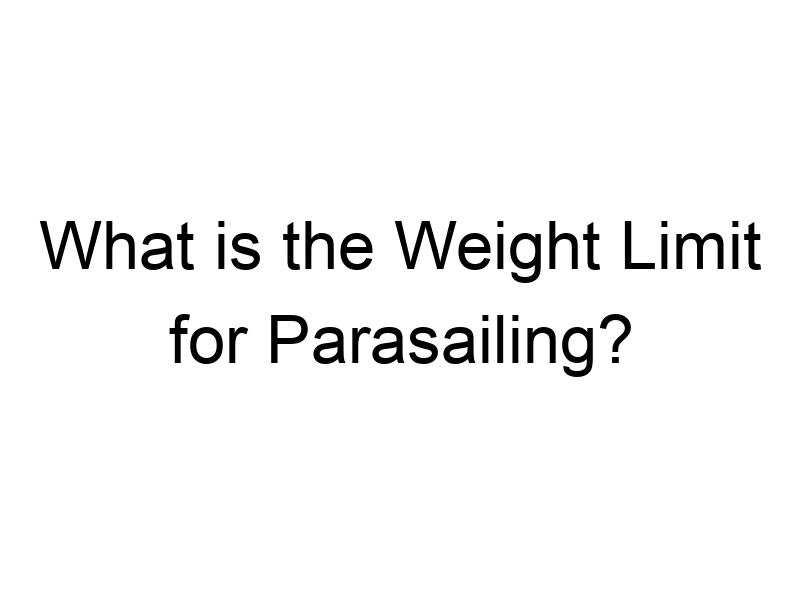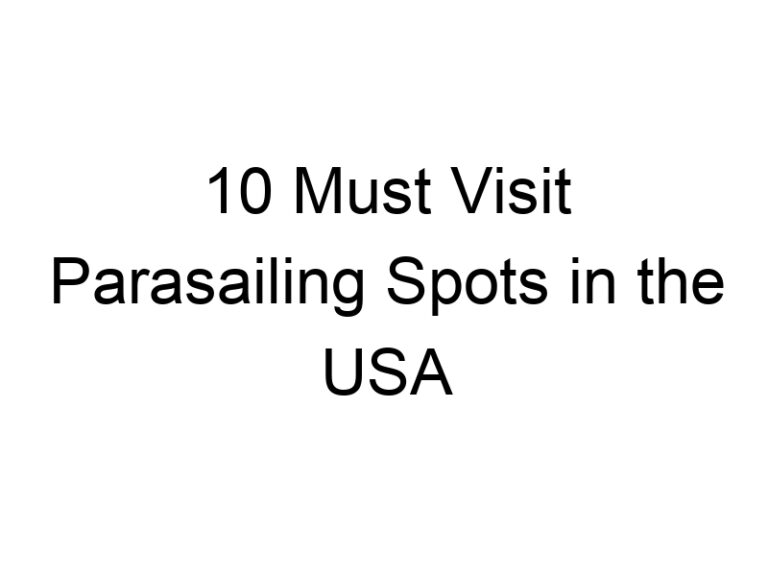Parasailing offers an incredible chance to soar above the earth and witness breathtaking views. It’s a blend of adventure and tranquility, making it a popular choice for thrill-seekers. However, safety concerns loom large. One major factor in ensuring a safe experience is the weight limit for this exhilarating activity.
The Allure of Parasailing: A Bird’s-Eye View
When you’re up in the sky, the world below seems to melt away. The wind rushes through your hair, and the ocean sparkles beneath you. This experience is what draws many to try parasailing. The beauty and excitement are unmatched; however, they come with responsibilities.
Safety First: Understanding Weight Limits
Weight limits are put in place to guarantee a safe journey through the skies. Exceeding these limits can lead to equipment malfunction or dangerous situations in mid-air. Knowing and adhering to these limits is crucial for a memorable and safe adventure.
Setting the Stage: This Article’s Focus
This article dives into the essential aspects of weight limits for parasailing. We cover factors that influence these limits, average restrictions, regulations, and guidelines for a secure experience.
Factors Determining Parasailing Weight Limits
Parasail Size and Design: Impact on Capacity
The size and design of the parasail play a crucial role in determining weight limits. Larger parasails can generally accommodate more weight, while smaller ones have stricter limits. Shape also affects performance; for instance:
- Round-shaped parasails can typically carry more weight than their rectangular counterparts.
- The fabric material influences durability and capacity, affecting how much weight they can safely handle.
Boat and Equipment Capabilities: Horsepower and Towing Capacity
The boat used for parasailing has its own limits too. The horsepower of the boat impacts how much weight it can pull safely. Operators must ensure that their equipment is rated to handle the combined weight of passengers and the parasail. The towing capacity typically ranges from 800 to 1,500 pounds, depending on the boat.
Weather Conditions and Water Conditions: Dynamic Variables
Weather plays a significant role in parasailing safety. Wind speed and water conditions can alter the maximum weight limits. During high winds or rough waters, operators may reduce weight limits to ensure safety.
Average Weight Limits for Parasailing
Typical Single Rider Limits: Ranges and Variations
For single riders, weight limits usually range from 150 to 250 pounds. Each operator sets specific guidelines based on their equipment and safety protocols. It’s vital for participants to check these limits before attempting the dive.
Tandem and Triple Rider Limits: Shared Weight Distribution
When it comes to tandem or triple rides:
- Tandem rides generally allow for 450 to 600 pounds combined.
- Triple rides typically have a limit of about 600 to 800 pounds.
Weight distribution among riders is taken into account, ensuring a balanced experience.
Weight Limit Variations Based on Location and Operator
Different locations may have varied limits. Operators in tourist-heavy regions often set stricter guidelines. Researching specific operators can help travelers plan their adventures better.
Understanding Weight Restrictions: Regulations and Best Practices
Legal and Regulatory Guidelines: State and Local Regulations
Each state may have its regulations concerning parasailing weight limits. Operators must comply with local laws to ensure safety. Understanding these guidelines could save participants from unfortunate incidents.
Operator Policies and Procedures: Individual Variations
Every parasailing company might have its policies regarding weight limits. Operators assess their equipment, location, and safety measures, leading to diverse limitations. It’s essential to check with the chosen operator beforehand.
Best Practices for Safe Parasailing: Communication and Preparation
Clear communication with the operator about weight and health conditions is fundamental. Ensure you disclose any information that may impact safety. Preparing mentally and physically adds to the enjoyment.
Exceeding Weight Limits: Risks and Consequences
Potential for Equipment Failure: Safety Concerns
Going over the weight limit can put significant strain on the parasail and equipment. This increases the likelihood of failures, which can lead to accidents.
Risk of Injury to Participants and Bystanders: Human Factors
An overloaded parasail is dangerous not just for the riders but also for those on the water. Injuries and accidents can occur if safety measures are ignored.
Legal Liability and Insurance Implications: Financial Consequences
Operators can face legal consequences if weight limits are disregarded. Passengers exceeding limits may also find themselves in a complicated legal situation. Understanding these risks is paramount.
Tips for a Safe and Enjoyable Parasailing Experience
Choosing a Reputable Operator: Due Diligence and Research
Selecting an established and reputable operator is crucial. Check for certifications, reviews, and safety records before making a choice.
Communicating Weight and Health Information: Transparency and Honesty
Be open about your weight and health conditions. Operators rely on this information to ensure everyone’s safety.
Preparing for the Activity: Physical Fitness and Appropriate Attire
Being physically fit enhances enjoyment. Dress appropriately and wear a life jacket to ensure safety out on the water.
Conclusion: Prioritize Safety for an Unforgettable Flight
Key Takeaways: Weight Limits, Operator Selection, and Preparedness
Understanding weight limits, selecting the right operator, and preparing adequately are essential for a great parasailing experience. Keeping safety at the forefront ensures an exhilarating and memorable flight.
Recap: Responsible Parasailing Practices for a Safe and Memorable Experience
We discussed weight limits, the factors affecting them, and how to operate within secure guidelines. Responsible practices lead to enjoyable adventures.
Final Thoughts: Parasailing’s Popularity and the Importance of Safety
Parasailing continues to grow in popularity, captivating adventurers everywhere. Prioritizing safety ensures each ride is filled with fun and wonder. Fly high and enjoy the thrill, but always remember: safety first!






